Sign up for our newsletter and receive special offers, access to free content, and information on the latest new releases and must-have designing resources! Plus, receive a coupon code to use on your first purchase from MyDesignShop.com for signing up.
For more excellent books and resources for designers, visit www.howdesign.com/strategicoffer.
Distributed in Canada by Fraser Direct, 100 Armstrong Avenue, Georgetown, Ontario, Canada L7G 5S4, Tel: (905) 877-4411. Distributed in the U.K and Europe by F+W Media International, Brunel House, Newton Abbot, Devon, TQ12 4PU, England, Tel: (+44) 1626-323200, Fax: (+44) 1626-323319, E-mail: . Distributed in Australia by Capricorn Link, P.O. Box 704, Windsor, NSW 2756 Australia, Tel: (02) 4577-3555.
Holston, David.
The strategic designer / David Holston.
p. cm.
ISBN 978-1-60061-799-7 (pbk.: alk. paper)
1. Design services. 2. Artistic collaboration. 3. Customer relations. I. Title.
NK1173.H65 2011
745 4dc22
ABOUT THE AUTHOR

With over 25 years experience, Dave Holston has worked in the fields of design management, advertising, marketing and public affairs for some of the worlds largest organizationshelping them take a strategic design approach that integrates planning, research, implementation and evaluation.
As the Director of Strategic Design Management at The University of Texas at Austin, Dave is responsible for the development and management of the universitys brand as well as leading a nationally recognized design team in the creation of print and web collateral, research, advertising and brand management.
Prior to working with the university, Dave served as lead designer for General Electric Services, Martin Marietta Services and Lockheed Martin Services companies. He has also held the position of Senior Art Director at the Philadelphia advertising firm Signature Communications, and later Creative Director for the European PC game developer Blue Byte Software. Throughout his career, Dave has focused on positioning design as key component of business success.
He lives in Austin, Texas, with his wife and two daughters.
TABLE OF CONTENTS
by Shawn M. McKinney
New Skills for the Conceptual Economy
An Overview of the Design Process
The Value of Process
Creating a Strong ClientDesigner Relationship
Empathic Design Through Research
Linking Design and Business
Designing for People
Managing the Complexity of Concept Development
Design Development
Design in the Land of the Bottom Line
Managing the Design Process
Implementing Design Process
foreword
A SHARED LANGUAGE
BY SHAWN M. MCKINNEY
Several years ago, over dinner with a mentor, I brought up the perennially difficult question of explaining to someone what we designers do for a living. How does one possibly explain design to someone unfamiliar with the discipline, without getting bogged down in an exhaustive, self-referential exercise in futility?
He laughed and began moving his silverware around. He caused his knife to trade places with his fork, then after a moments consideration, returned them to their original positions. He slid his fork a half-inch to his left, then a few nudges north. He straightened his spoon to run exactly parallel to his knife and fork. He moved his water glass a bit to his left, to left-align it precisely with his knife. This, he suggested, is what we do.
In essence, as designers, this IS what we do. We move things about. We consider new combinations, new possibilities. We align one thing with another. We create physical (and psychological, and metaphorical) relationships. We consider size, weight, space, proportion, materiality and so forth. We utilize, knowingly or not, design author Robin Williamss catchy list of principles: Contrast, Repetition, Alignment, Proximity. We constantly add to the worlds landfills while struggling to improve our visual environments. We do much, in fact, to order, organize, reinterpret, shape and communicate ideas, information and space.
Yet, we continue to struggle to communicate what exactly we do, and why it is of value and significance. In particular, we struggle to communicate the value of design to the business community. Our professional organization, the American Institute of Graphic Arts, has devoted many hours and resources over the past several years to address just this. Yet too often, designers perceive business as fundamentally foreign to our way of thinking, while business leaders are often reluctant to credit the role design plays in their own success. We can hardly fail to acknowledge each others presence, yet we often find ourselves without a clue as to how to join forces, how to find common ground and share notes. Business we tend to think of as a left-brain activity, while certainly design belongs to the right. Yet, we need both sides, working together, to function effectively. Designers stand to benefit immensely from strengthening their business acumen, while business people only increase their chances of success by thinking more like designers.
How then, to bring both sides together, to build bridges, to encourage a mutually beneficial dialogue and collaboration? It just so happens we share a language. That language is process, as Dave Holston makes clear in the pages that follow. Both designers and business people have their own ways of doing things, particular processes and procedures for solving problems and achieving results. Yet, we share many principles in common.
In both the worlds of business and design, as in many other walks of life, repetition is a key element of success. What distinguishes the professional from the amateur, first and foremost, are degrees of skill, discipline, and experience that enable someone to repeat a process as a means of obtaining a desired result, again and again. In areas of practice such as business, medicine and food preparation, repetition and predictability are essential. Creativity and experimentation are perhaps emphasized more strongly and more often in the field of design, yet here, too, on closer inspection, we see the importance of repetition and process. Here, too, we can see the essential role that process and repetition play in producing success.

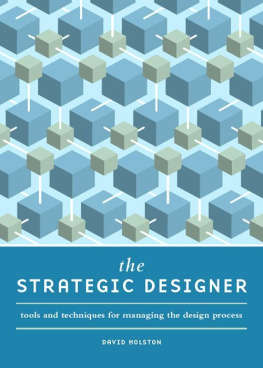

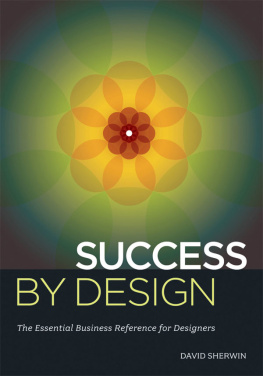
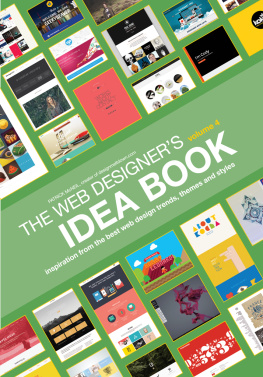

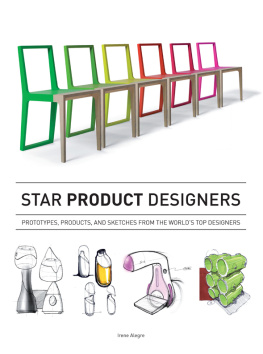

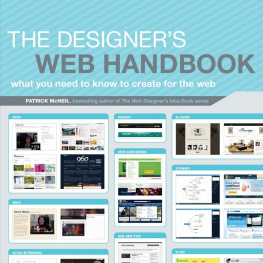
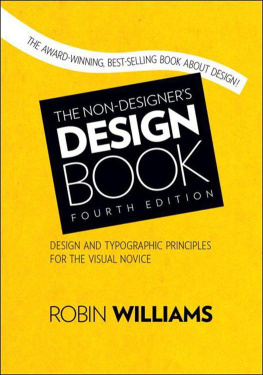
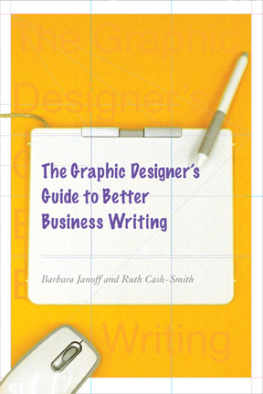


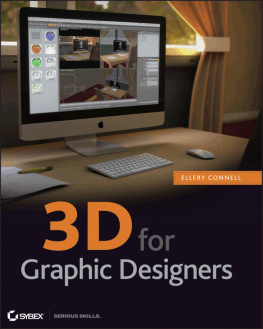



 Edited by Amy Owen
Edited by Amy Owen